Get PeakVisor App
Sign In
Search by GPS coordinates
- Latitude
- ° ' ''
- Longitude
- ° ' ''
- Units of Length

Yes
Cancel
Share ×

Scan the QR code and open PeakVisor on your phone
❤ Wishlist ×
Choose
Delete
Velebit Nature Park or Park Prirode Velebit in Croatian is the biggest protected area in the country. It lies on the coast of the Adriatic Sea and is home to an enormous mountain with numerous rocky peaks, two types of vegetation, and a long history. Velebit Nature Park also governs over two smaller national parks (Paklenica and Northern Velebit). There are 651 named mountains in Park prirode Velebit. The highest and the most prominent mountain is Vaganski Vrh (1,758 m/ 5,767 ft).

Velebit Nature Park is situated across 2,200 sq. km (1,367 sq. mi) of land, covering the whole area of Velebit mountain, making it one of the largest protected land areas in Croatia. Just like the mountain, the park stretches from the Vratnik Pass in the northwest to the Zrmanja River Canyon in the southeast, spanning a total distance of 145 km (90 mi).
The park is bordered by Lika, Gacka, and Gračac fields on the inland side, while the rest of the park gravitates towards the Adriatic Sea on the opposing side. Velebit Nature Park was declared a protected area in 1978 by UNESCO's World Network of Biosphere Reserves due to its unique and diverse ecosystems and significant contributions to sustaining biodiversity.
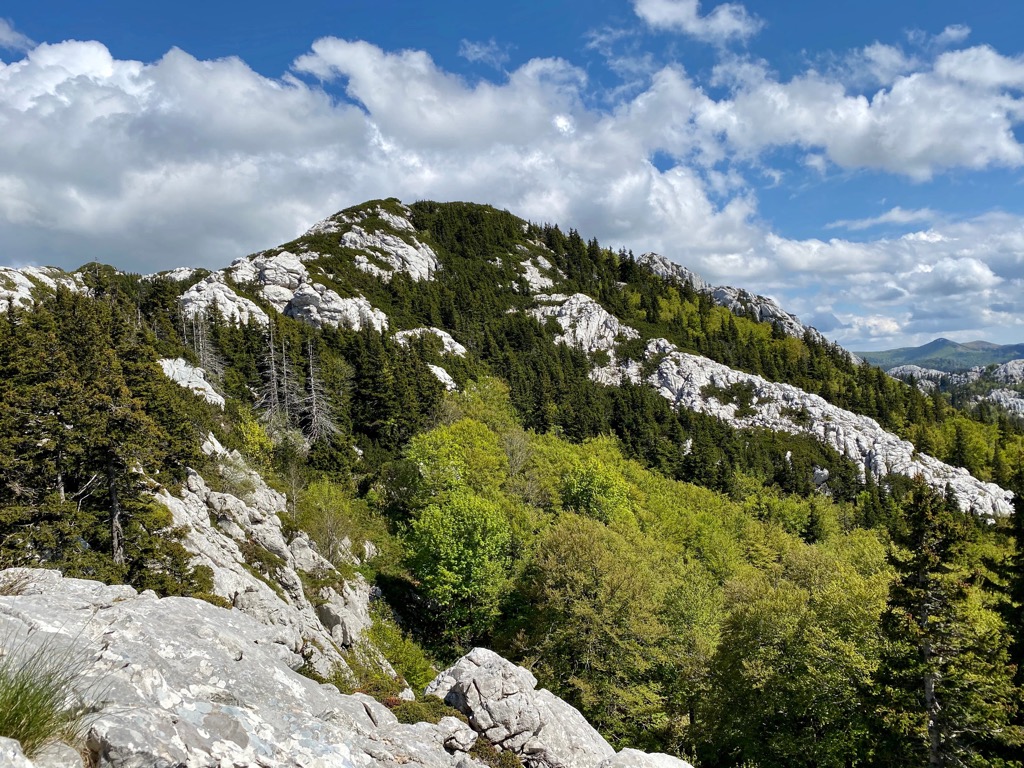
This park protects the same area as two smaller national parks in Croatia: Paklenica National Park and Northern Velebit National Park. All three are offering unique natural beauty and further protect the mountain landscape.
Croatia's biggest mountain is Velebit, part of the larger Dinaric mountain chain which extends from the Julian Alps to Albania. In other words, the mountain range that runs along the Adriatic Sea on the northwest-southeast axis, from Vratnik Pass to Zrmanja Valley, is Velebit massif.
Measuring around 145 km (90 mi) in length, the mountain's width varies from 30 km (18 mi) in its northern region to 10 km (6 mi) near its southern tip. To the west, Velebit Mountain appears abruptly from the sea, casting a powerful presence over it. The highest peak of Velebit Mountain is Vaganski Vrh (1,758 m/ 5,767 ft), which lies in Paklenica National Park.
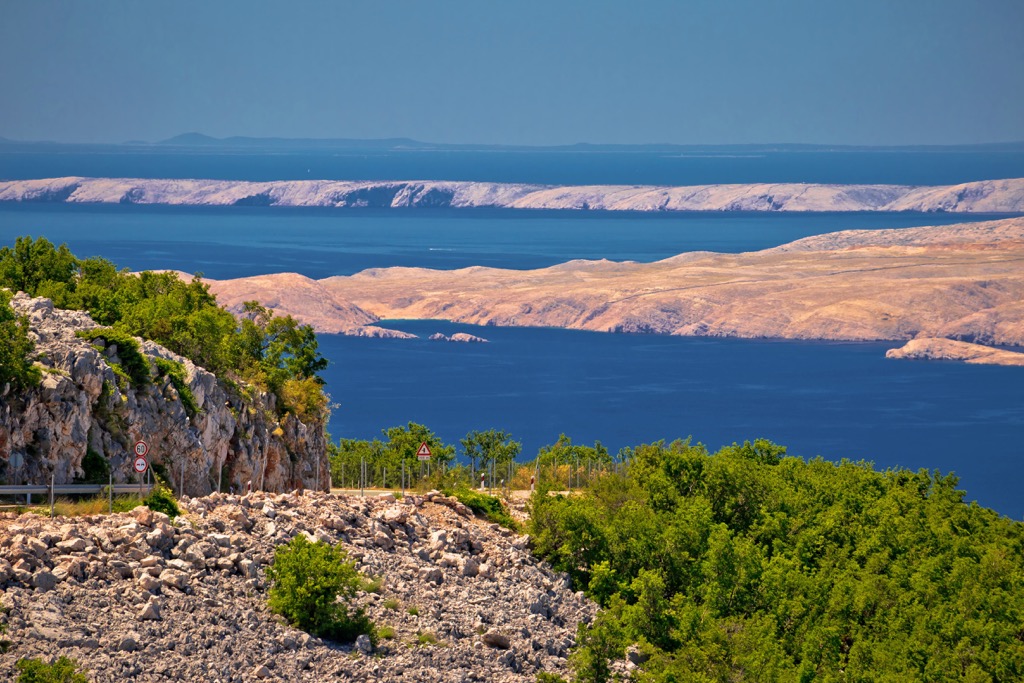
Spanning an area of approximately 2,270 sq. km (1,410 sq. mi), the terrain of Velebit massif consists of karst ridges, sinkholes, crags, valleys, and foothill peaks with 130 elevations reaching 1,370 m (4,494 ft) or higher. The highest peak is located in the southernmost part and reaches up to almost 1,800 m (5,905 ft), named Vaganski Vrh (1,758 m/ 5,767 ft). The central peaks range from 1,600 to 1,700 m (5,249 ft to 5,577 ft) and the northernmost peaks go up to almost 1,700 m (5,577 ft).
Velebit is home to two national parks, one nature park, a biosphere reserve, and plenty of untouched forests, canyons, and other natural landscapes. Zavratnica Cove, Cerovačke špilje Cave Complex, Velnačka Glavica Site, and Štirovača are among the protected landscapes, geomorphological and paleontological monuments of nature and special forest vegetation reserve also protected under the nature park.
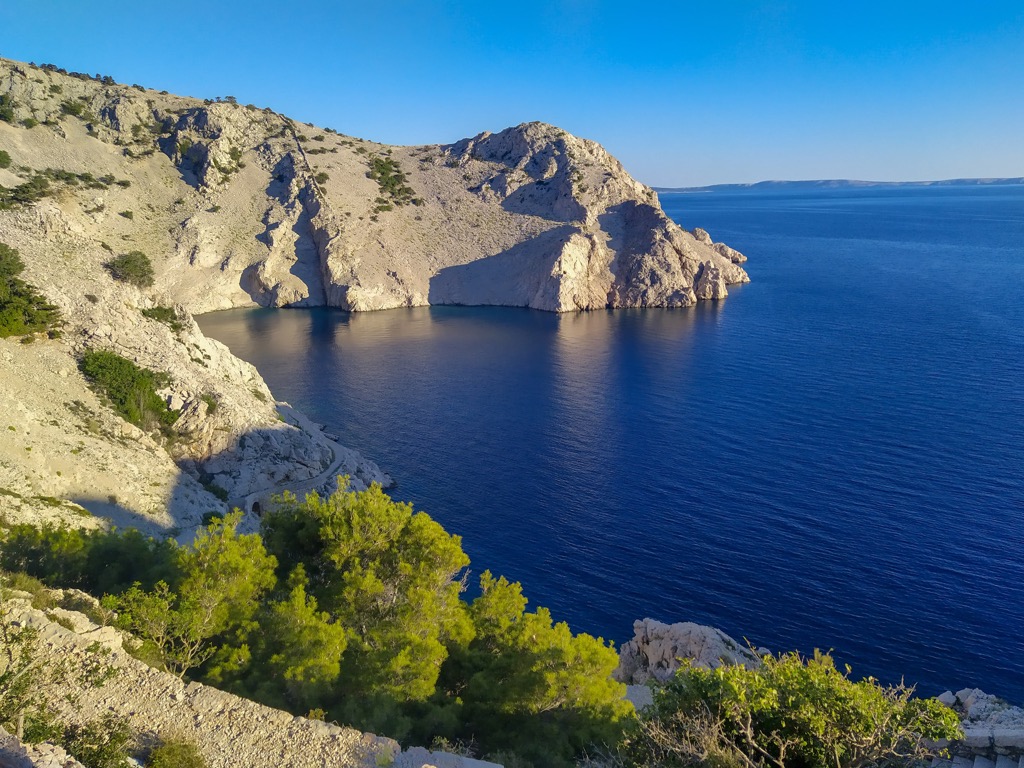
This is why Park Prirode Velebit protects and governs over the whole Velebit massif. The area is home to a vast array of environmental types, ranging from Mediterranean landscapes at sea level to beech forests from Central Europe, and near-boreal systems and alpine meadows at higher elevations, typical for the Dinaric Alps.
Velebit can be divided into four distinct geographic regions, which include Northern, Middle, Southern, and Southeastern parts. Mountain passes Veliki Alan, Baške Oštarije, Vratnik and Prezid serve as geographical boundaries between these regions. The southeastern region stands out, since it is characterized by the Zrmanja Canyon.
The Velebit mountain is a classic example of karst topography, consisting predominantly of carbonate rocks. It is home to various types of karst landforms, both above and below the ground surface, making it an interesting site for geological study.
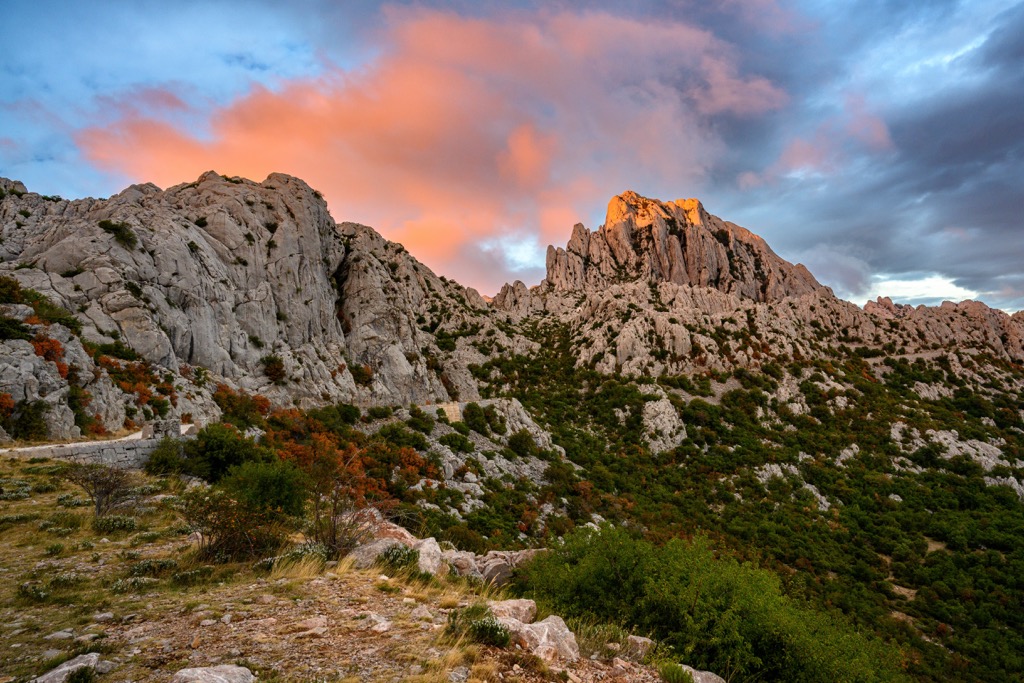
The majority of the Nature Park is made up of Jurassic limestone, but other geological epochs are present too. For instance, Pleistocene and Paleogene deposits are the most common, with traces of Holocene sediment. The oldest rocks found in the area date back to the Middle and Upper Carboniferous.
In addition to its fundamental karstic structure, the terrain of Velebit has also been molded by tectonic shifts throughout its geological history. These shifts have contributed to the formation of fault lines and other landforms that are evident today. Moreover, various environmental elements have further modified the relief in more recent geological periods with an abundance of karst forms visible around the region.
Karrens, sinkholes, ice pits, canyons, karst peaks (kukovi), and rivers are seen here. Karst springs and lakes further add to the beauty of this massif. Velebit Nature Park is renowned for its incredible geomorphological features. To protect and preserve these special parts of nature, Zavratnica has been appointed an Important Landscape, and Cerovac Caves is a Geomorphological monument.
Velebit is a mountain range located between the Mediterranean and continental climates, causing it to have a rather turbulent climate with extreme temperature variations. This causes enormous amounts of rain and quickly changeable weather, which dictate both human lives but also geomorphology.
Water is a major factor in the formation of Velebit karst, both above and below the surface. It dissolves carbonate rocks, ultimately influencing their current shape. Karst phenomena found underground are fascinating and diverse. These can include large pits, caves, underground lakes, and natural wells called "vrulje". Velebit massif is practically devoid of water resources. Nonetheless, it contains large underground reservoirs of fresh water.
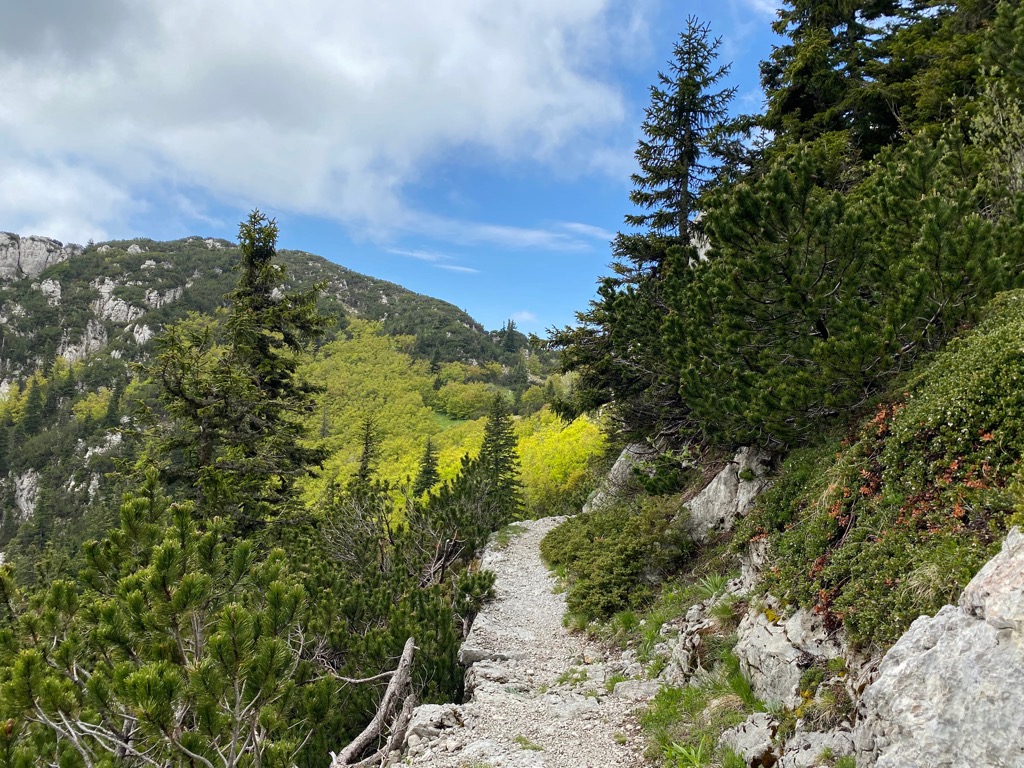
In continental Velebit, rivers such as Lika and Gacka can be found disappearing underground when they reach the Velebit massif. These rivers then make their way through the same massif to end up in the Adriatic Sea, where they resurface as coastal springs or submarine springs known as vrulje.
Velebit is a globally recognized area for its impressive vertical speleological formations like pits. Lukina jama (lit. Luka's pit) has been explored to a depth of -1,392 m (-4,566 ft), making it the eleventh deepest entrance in the world. Surprisingly, its bottom is located at a mere 80 m (262 ft) above sea level and there are more than 200 entrances towards it, discovered up to now.
These are the highest peaks of the Nature Park Velebit:
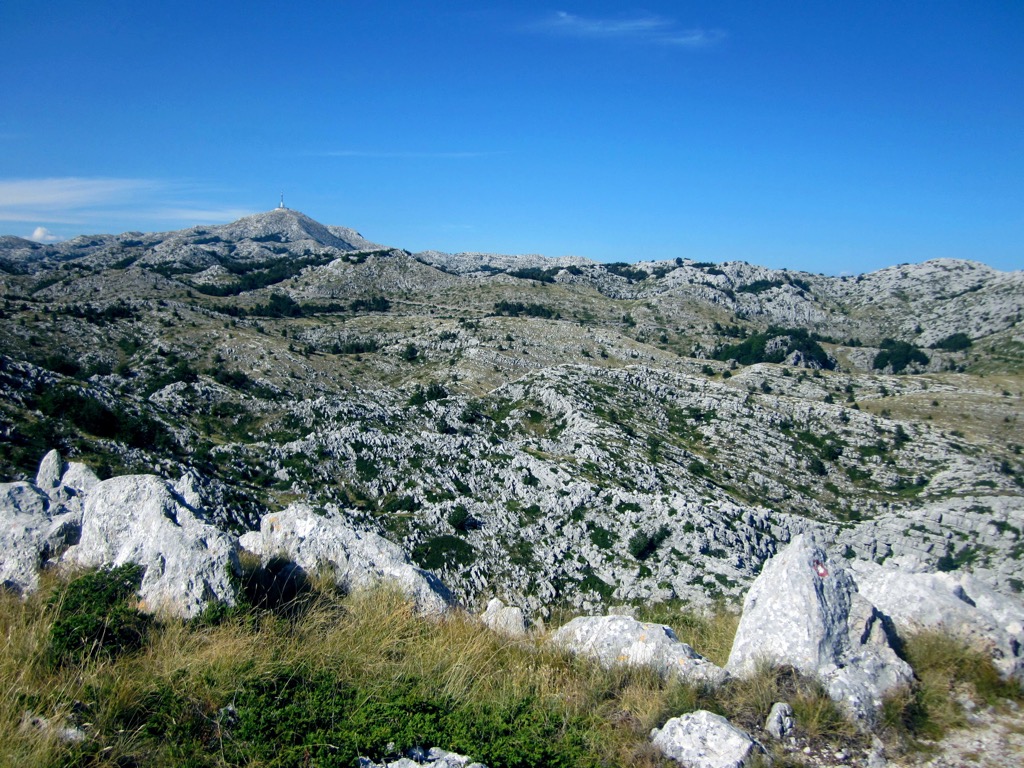
Velebit is known for its rich biodiversity, which can be attributed to the range of habitats and also the fact that some parts of the mountain served as a refuge for certain species during previous glacial periods. Over 2,500 plant species have already been identified there, with around a hundred being endemic.
In 1978, Velebit was added to the UNESCO Man and the Biosphere Programme (MAB) as a result of its immense ecological value and its contribution to the conservation of global biodiversity. The mountain's natural values have drawn many domestic and international researchers and experts, making it one of the most highly valued biological sites in Croatia.
The Velebit area is home to around 90 different habitat types, of which 20 are present in Paklenica National Park. A significant proportion, around 70%, of the entire habitat types in Croatia are therefore found on Velebit mountain.
This mountain is remarkable for having two distinct appearances and ecosystems on each side, one towards the Adriatic coast and one towards the continental side. There are several observable differences between these habitats, vegetation and species being the most important.
Extreme environments, like mountaintops, rock cracks, subterranean habitats, and submarine springs provide a unique safe haven for the growth of certain plants and animals. These isolated habitats contribute a great deal to biodiversity. One of these is the endemic leech Crotobranchus mestrovi, which is known for its special adaptations to extreme living conditions and it has only been found in the deepest pit caves of Northern Velebit National Park.
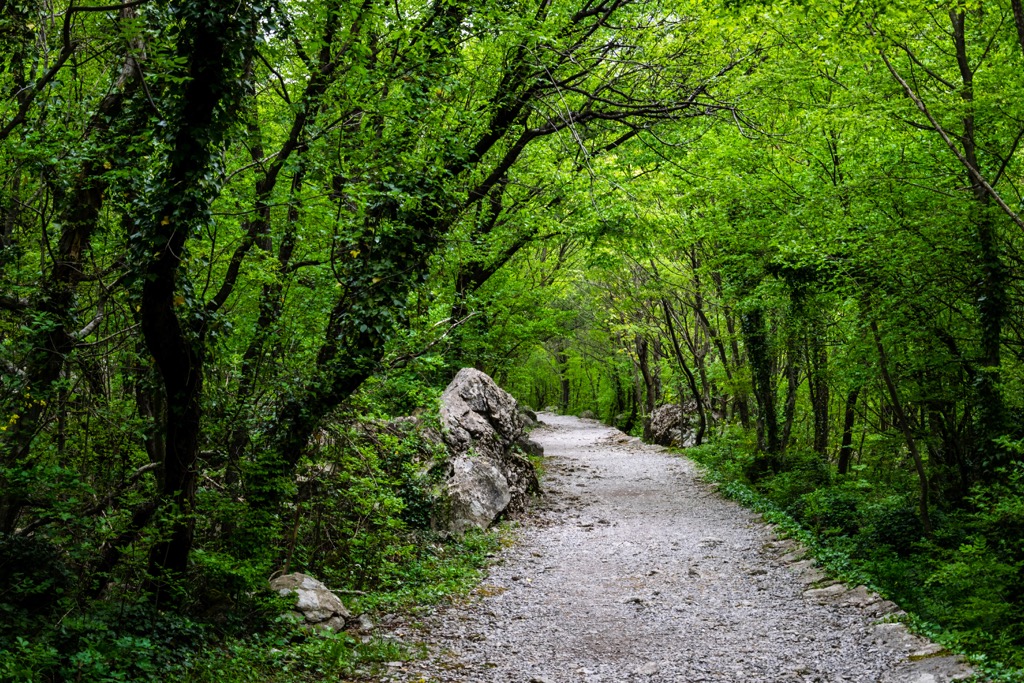
Croatia's Velebit Massif is an essential floristic area and a hub of European biodiversity, renowned for its numerous plant species and altitudinal zonation. It is home to a wide variety of rare, endangered, endemic, and protected plant species.
Velebit has an abundance of endemic species, which is why it is often referred to as a ‘center of endemism’ for the region. Caves, rivers like the Krupa and Zrmanja, rockfaces, mountain grasslands and pastures are the habitats that help these endemic species thrive and cut them off from the rest of the world. Some of these endemic plants are only naturally occurring on Velebit, such as the Velebit degenia (Degenia velebitica).
Velebit is also home to a wide variety of wildlife, which includes large carnivores like wolves, bears, lynxes, and wild cats, as well as other mammals such as boars, roe deer, and chamois. There are many birds here including golden eagles, plus several owl and woodpecker species as well.
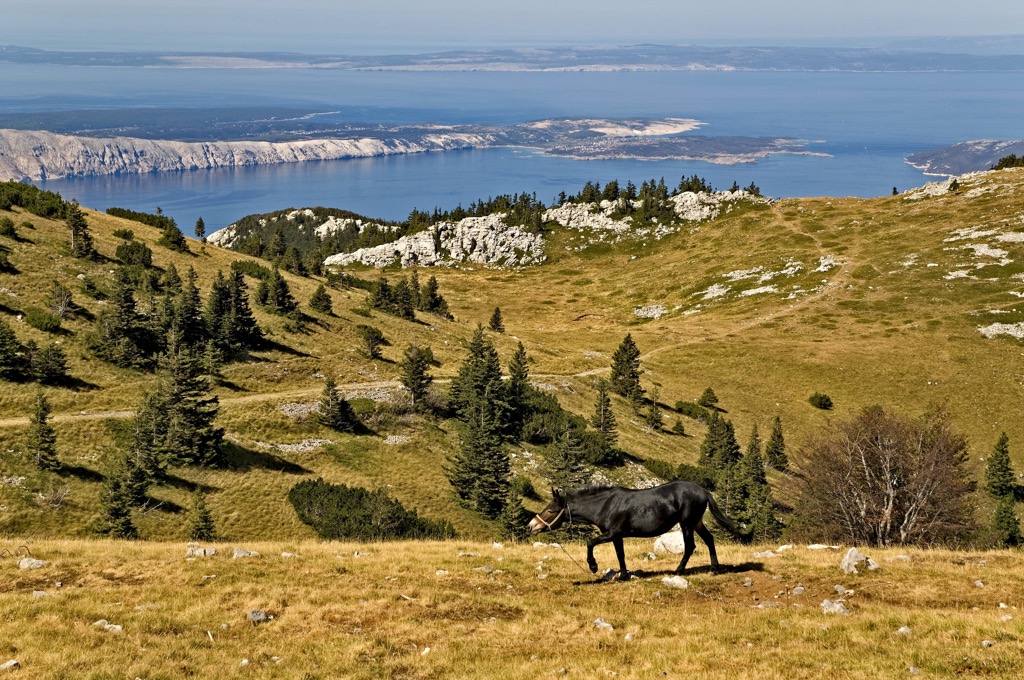
Besides larger carnivores, the Dinarides region is home to some smaller ones too, like mustelids, badgers, and foxes. Not to forget the significant glacial relict species like the Balkan snow vole and garden dormouse, all calling Velebit their home. It is also home to a wide variety of reptile species, primarily vipers and common adders which are highly protected and live in the numerous rocks one can see here.
The Velebit mountain range has a rich history of human occupation, visible in the numerous structures such as old churches, cultural monuments, mountain huts, and settlements that still remain today. Evidence of the customs and lifestyle of mountain villagers can be seen by exploring monuments from the past such as the local watermills, funeral monuments (mirila), and shepherd's huts.
Traces of human activity have been found in the lower parts of the mountain since prehistoric times and continue still today. These areas tend to have milder climates, making them favorable for settlements. Archaeological sites from the Stone and Iron Ages are located there as well as findings from Roman glass, coming from the Roman town Argyruntum, lying below today’s Starigrad.
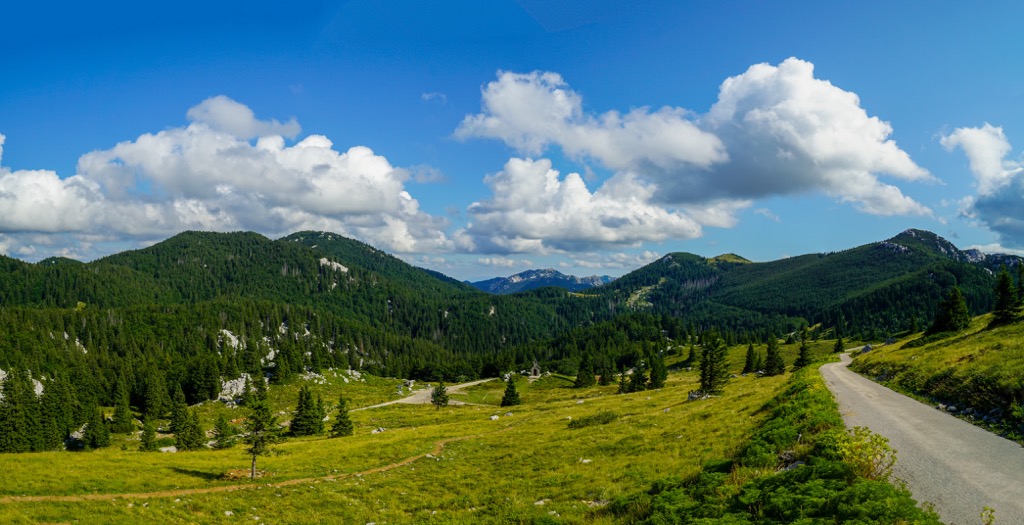
People from nearby villages on the coastal slopes would take their livestock there for summer grazing occasionally. This is where and how locals started building summer lodges for centuries. Mirovo, located in Sjeverni Velebit National Park is one of the largest and most impressive complexes of these summer dwellings in the park.
The local people would clear small patches of land here and cultivate it. To build their homes and summer lodges, they used stones, as these were the most readily available material. Marasovici, a hamlet located near the entrance to Paklenica National Park, is one of the few well-preserved settlements and can be considered an ethno village. Velebit mountain passes were very significant for the transportation and exchange of goods between coastal regions and the interior areas.
The local roads have been standing the test of time, highly valued as part of the local building heritage and stone-carving skills. Near the roads, one can also see stone monuments known as “Mirila”. They signify an important cultural heritage found along the Velebit traditional trails.
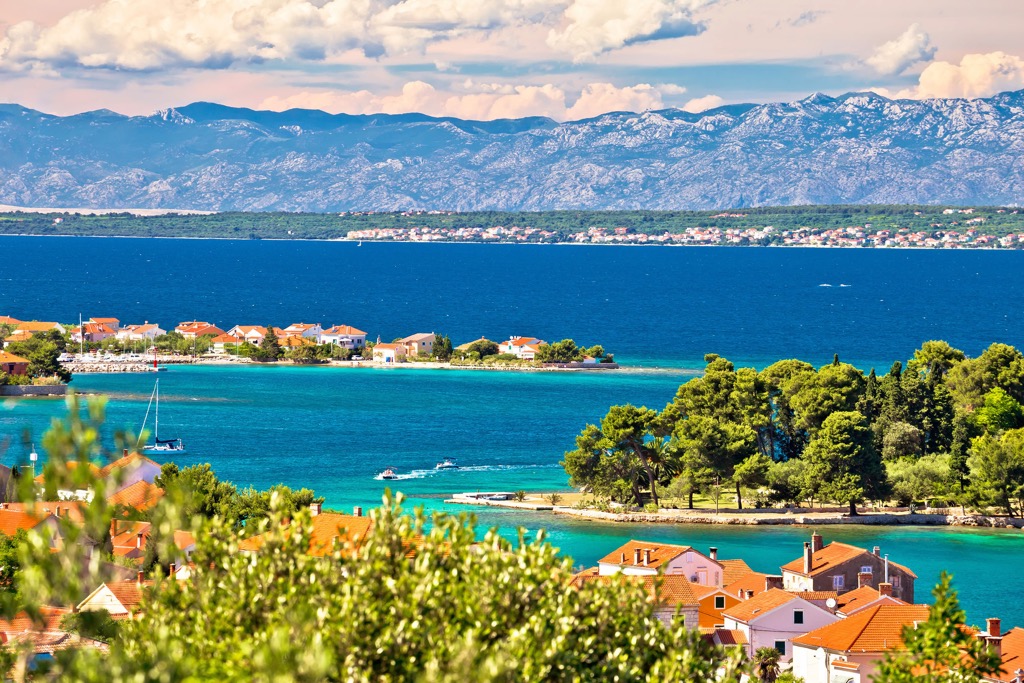
They were traditionally used as a rest stop for transporting the dead from the mountain to its base and towards the cemetery where they would be laid to rest. This practice has been passed down through generations and serves as an important reminder of their history.
Velebit Mountain has a long history of economic activity, principally cattle breeding and forestry. Agriculture wasn't an important factor as there was limited arable land in the area. The coastal regions were known for their extensive fishery activities. It is well-known to us for its coast and natural beauty with no major industrial plants in the vicinity. Tourism has become a principal industry in the area over the last few decades.
Velebit Mountain is notably beautiful and has significant biodiversity, despite being exposed to certain developmental pressures caused by human activities. It remains relatively preserved in comparison to other mountains today.
In the 1920s, the Štirovaca and Paklenica forests were declared national parks, kicking off numerous legal measures taken to protect them. Their preservation is continued every year thanks to official regulations in place, which stopped 20 years later. Before the Second World War, neither Velebit nor Paklenica had any formal protection status.
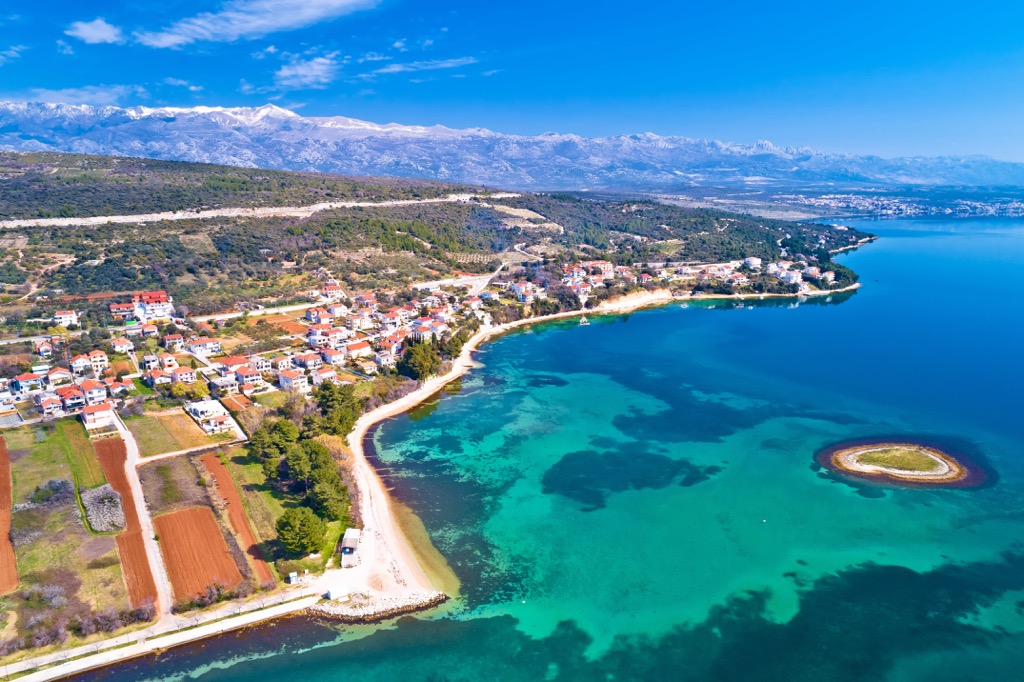
As a result, they were in danger of being degraded or destroyed. To preserve this unique area, Paklenica National Park was established in 1949. The Northern Velebit reserve was also formed, and only in 1999 did it become a national park.
In 1978, UNESCO's Man and Biosphere Program (MAB) acknowledged the significance of this mountain by declaring it a Biosphere Reserve with boundaries that largely resembled that of our park today. In summary, both Paklenica and Sjeverni Velebit National Park fit inside Velebit Nature Park. This park encompasses most of the Velebit Mountain range and is also a declared Biosphere Reserve.
In addition to the three main parks, there are various other, less prominent protected areas within their boundaries. Like the strict nature reserve called Hajducki and Rožanski kukovi, Cerovacke caves, Zavratnica protected landscape, and two botanical reserves or Visibaba and Zavižan-Balinovac-Velika kosa.
These are the best hikes in Velebit Nature Park:
Ante Premužić, a passionate mountaineer and admirer of Velebit, designed the Premužić Trail intending to make it easily accessible to both mountaineers and casual visitors. He wanted to open up Velebit for everyone.
This trail is 56 km (34 mi) long and 1.2 m (4 ft) wide. The Zavižan hut situated at 1,594 m (5,229 ft) is the starting point of the trail which culminates at Baške Oštarije (927 m/3,041 ft). There are a few paths that connect to it along its length. It takes approximately 3 days to complete the entire trail, also known as one of Croatia’s best hikes.
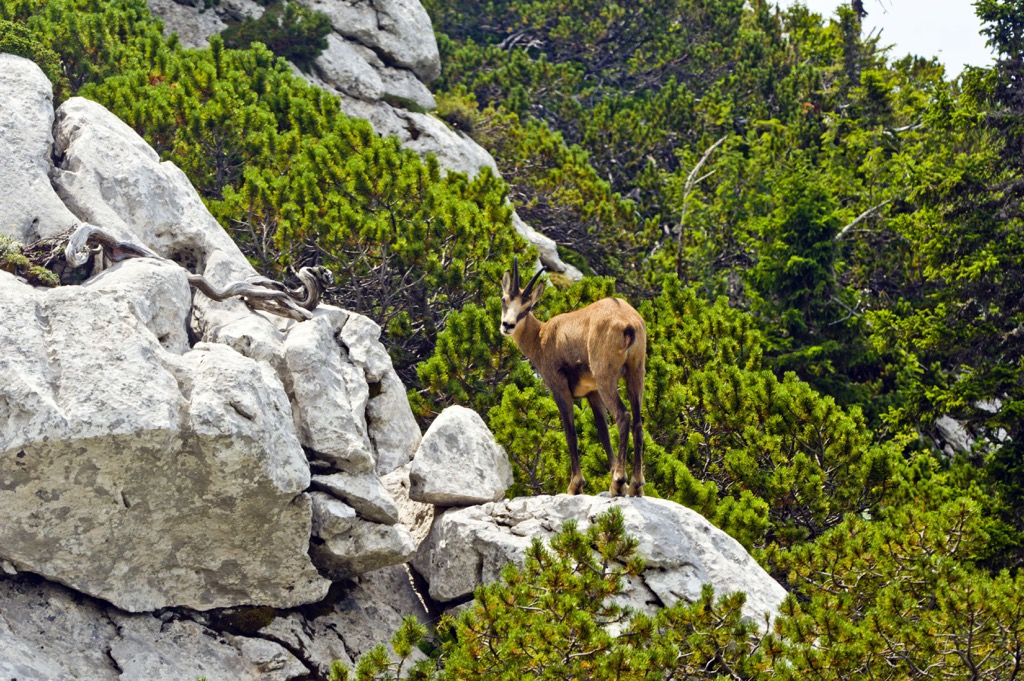
Vaganski Vrh (1,758 m/ 5,767 ft) is the summit of both Velebit Nature Park and Paklenica National Park. The hike to the top starts from the entrance of either Struge or Marasovac paths. The route may be challenging since it involves a climb of 1,000 m or 3,280 ft in elevation.
It's possible to complete the hike in Velika Paklenica Canyon as a loop, going from the hut to the peak and back. This usually takes all day and should only be attempted in good weather.
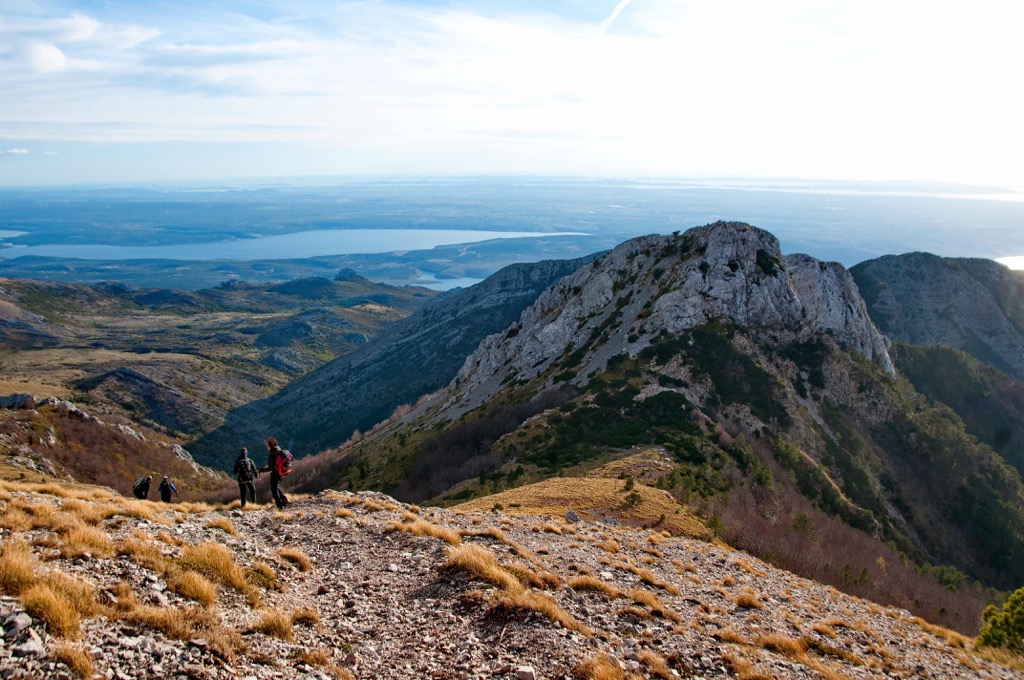
This is a popular and easy hike numerous hikers take. Therefore, it might be crowded during the summer months. The trailhead is at Zavižan hut (1,594 m/5,229 ft), with two trails leading to Veliki Zavižan (1,676 m/5,498 ft). The starting point of these paths is the Velebit Botanical Garden.
The trail to the summit typically goes through a forest before reaching rocky terrain. The view from the top is stunning and one can see various nearby islands, as well as other peaks of the mountain. Altogether, it's a 300 m (984 ft) ascent and should take no more than 4 hours for most people to complete.
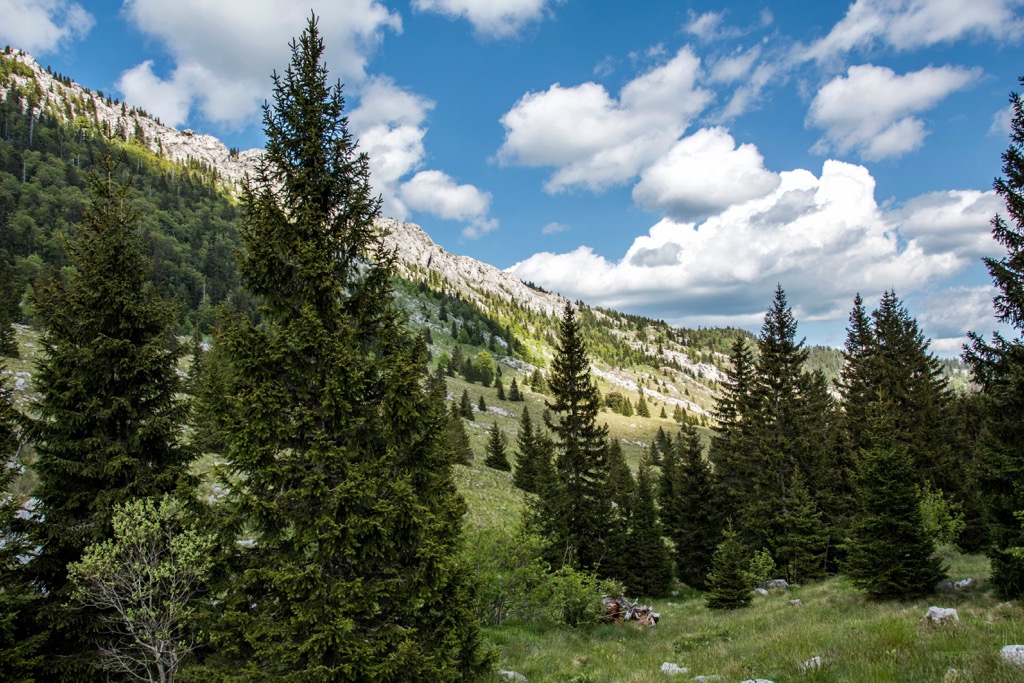
These are the bigger cities of Velebit Nature Park:
Gospic is a city located in the Lika-Senj County of Croatia, situated on the banks of the Gacka River. The city has a long history, dating back to the Roman Empire, and has been an important trading center since medieval times. Today, Gospic is a popular tourist destination, offering visitors a variety of attractions such as historic sites, museums, churches, and outdoor activities.
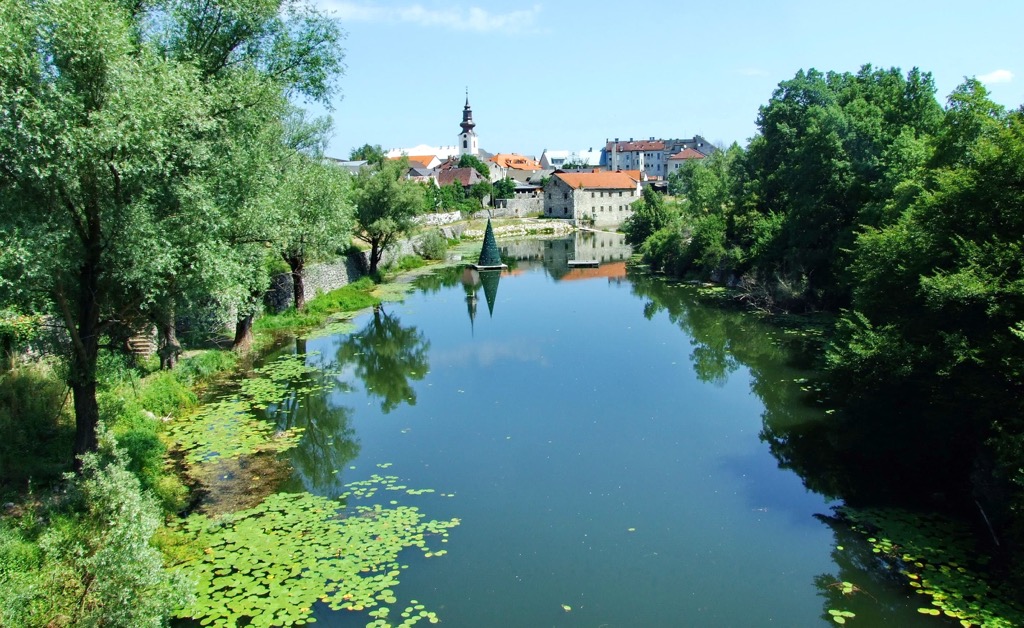
Starigrad, Croatia is a beautiful coastal town located on the Adriatic Sea. The town has a rich history and culture that dates back to the Roman Empire. Visitors can explore Paklenica National Park, and see the monuments, enjoy rock climbing or hiking. There are also plenty of activities to do such as swimming, sailing, fishing, and more.
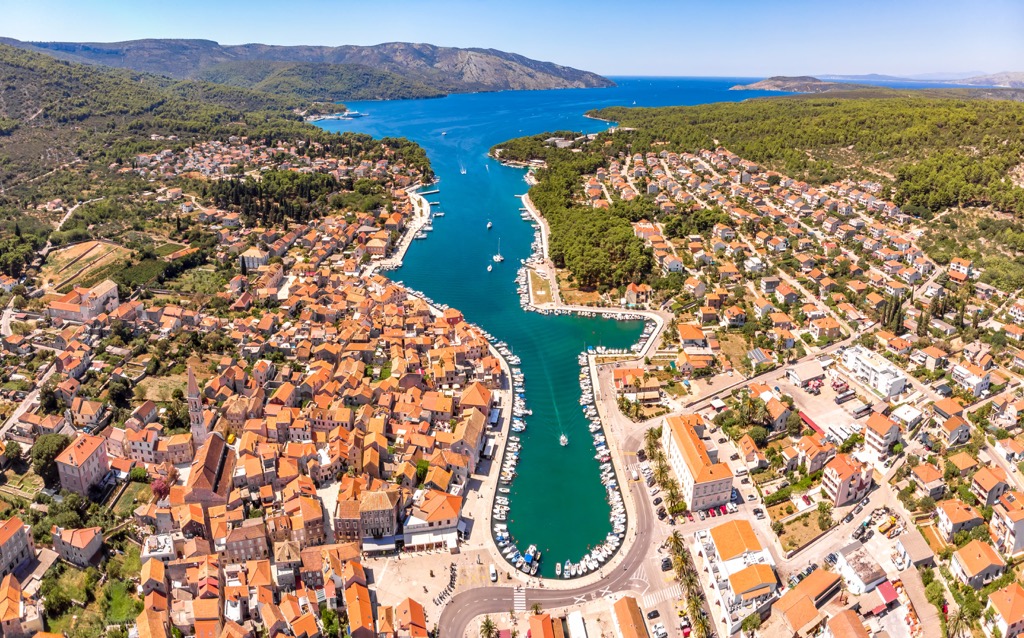
This is a beautiful coastal city lying on the Adriatic Sea in Croatia. Zadar has been inhabited since prehistoric times and has a rich history that dates back to the Roman Empire.
Today, it is a popular tourist destination with many attractions such as the Sea Organ and St Donatus Church. Visitors can explore Zadar's old town with its cobblestone streets and enjoy its delicious seafood cuisine.

Explore Park prirode Velebit with the PeakVisor 3D Map and identify its summits.








